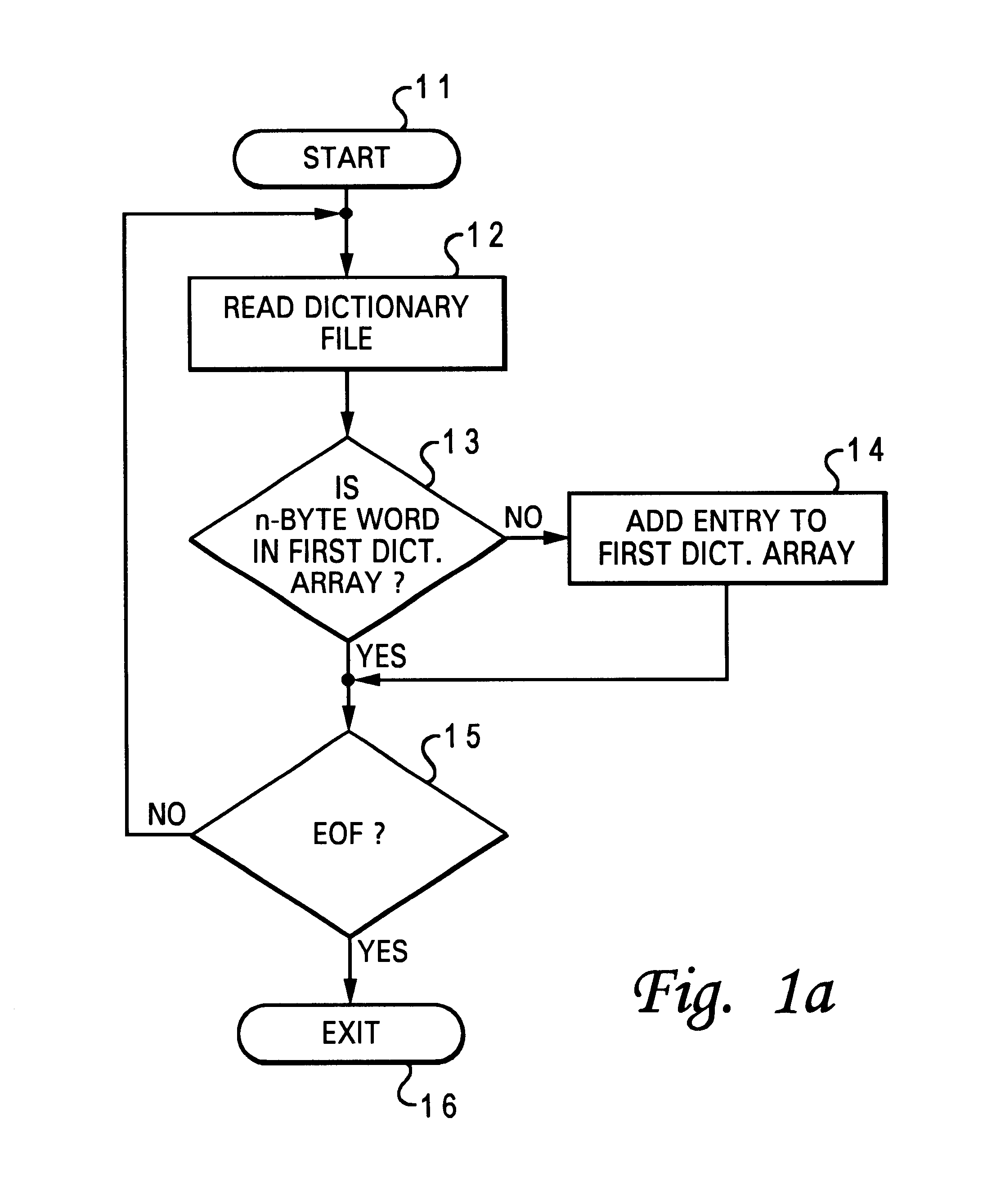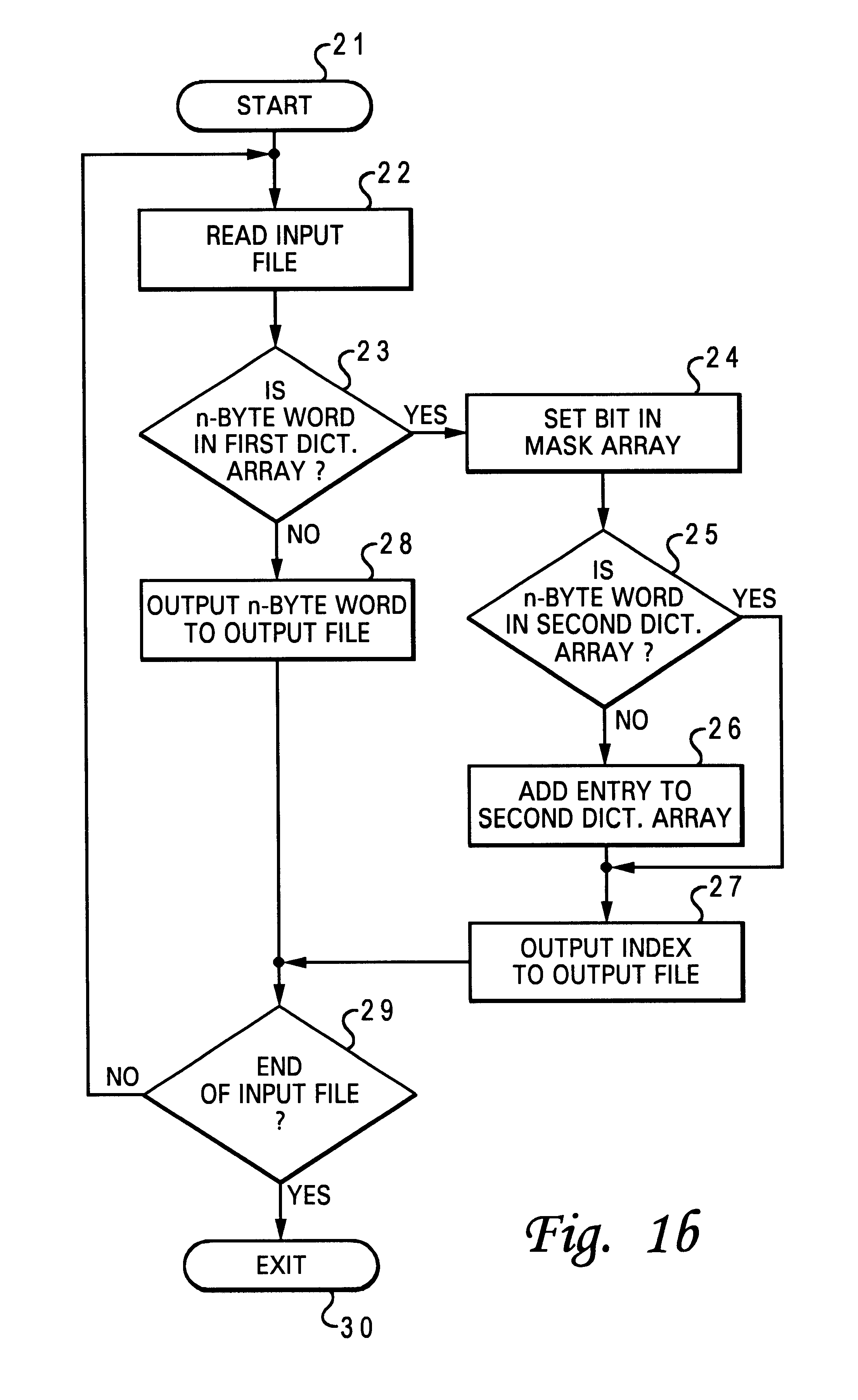Method and system for compressing files utilizing a dictionary array
- Summary
- Abstract
- Description
- Claims
- Application Information
AI Technical Summary
Problems solved by technology
Method used
Image
Examples
Embodiment Construction
As mentioned above, a dictionary is stored along with the data as part of a compressed file when a dictionary-based compression scheme is being utilized. Hence, one of the objects of the present invention is to ensure the size of the dictionary to be as small as possible. To that end, a binary file commonly available to a data-compressing system during compression and to a data-decompressing system during decompression is chosen to serve as a dictionary file, in accordance with a preferred embodiment of the present invention. The binary file can literally be any type of binary file including an application program file and an operating system component file, as long as the binary file is available to both the data-compressing system and the data-decompressing system. The chosen dictionary file is then sent to a parsing process that identifies all unique bit patterns of a given length to yield a first dictionary array.
Referring now to the drawings and in particular to FIG. 1a, there ...
PUM
 Login to View More
Login to View More Abstract
Description
Claims
Application Information
 Login to View More
Login to View More - R&D Engineer
- R&D Manager
- IP Professional
- Industry Leading Data Capabilities
- Powerful AI technology
- Patent DNA Extraction
Browse by: Latest US Patents, China's latest patents, Technical Efficacy Thesaurus, Application Domain, Technology Topic, Popular Technical Reports.
© 2024 PatSnap. All rights reserved.Legal|Privacy policy|Modern Slavery Act Transparency Statement|Sitemap|About US| Contact US: help@patsnap.com










